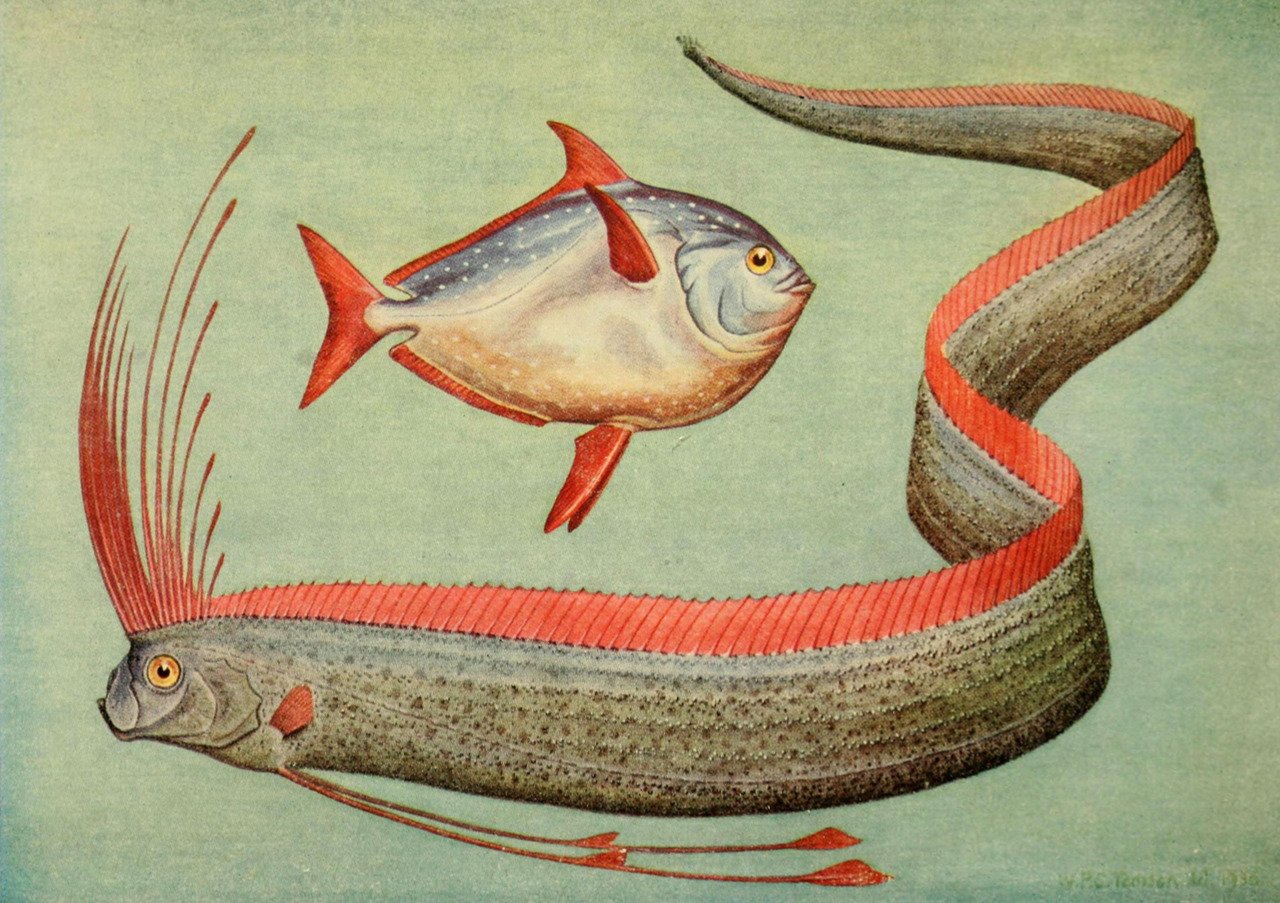Explore the myth and science behind oarfish sightings. Are these deep-sea creatures harbingers of doom, or are there other explanations for their appearance?
In an unusual event off the coast of Baja California Sur, a shimmering oarfish has been sighted, reigniting old legends about these deep-sea creatures being harbingers of natural disasters. This sighting, captured by Robert Hayes, has drawn attention to the oarfish, often called “doomsday fish” due to their mythical association with impending calamities.
Hayes, who was visiting the beach with his wife, filmed the injured oarfish as it struggled near the shoreline before being guided back to the water. He shared his experience with the Washington Post, noting he had never seen an oarfish before.
The Enigmatic Oarfish
Oarfish are known for their significant length, typically around 10 feet, but can reach up to 36 feet. They live in the mesopelagic region, an area described by the National Oceanic and Atmospheric Administration as the “least explored ecosystem on the planet.” Despite their size, oarfish are rarely seen alive.
Folklore and the “Doomsday Fish” Legend
Historically, oarfish have been linked to superstition, with centuries of folklore portraying them as harbingers of disaster. They have inspired legends and are sometimes referred to as “messengers of the Dragon Palace” in fairytales.
One historian suggested that oarfish might be one of several mythic figures linked to ominous predictions, as reported by the Guardian. The belief that oarfish foretell earthquakes gained traction after the 2011 earthquake in Japan, when about 20 oarfish were found on beaches. However, modern investigations have largely debunked a direct correlation.
In August 2017, two oarfish washed ashore in the Philippines one day before a magnitude 6.6 earthquake struck Luzon. In 2013, similar occurrences were reported along California’s beaches. Despite these coincidences, there is no concrete evidence that oarfish can reliably predict natural disasters.
Scientific Perspectives
The scientific community is divided over the significance of oarfish sightings. Some researchers suggest that oarfish might be more sensitive to seismic activity due to their proximity to underwater fault lines, which could cause them to surface before an earthquake.
However, most scientists believe that environmental factors such as ocean currents or illnesses are more likely explanations for oarfish surfacing.
A 2019 study published in the Bulletin of the Seismological Society of America found no direct relationship between oarfish sightings and earthquakes in Japan. This sentiment has been echoed by further research in the field.
Recent Sightings and Scientific Explanations
An oarfish was recently spotted in Baja California Sur, along Mexico’s Pacific Coast. The fish was seen wriggling along the beach, and people attempted to guide it back into the water.
These slender creatures typically live at depths between 660 and 3,280 feet underwater. On the rare occasions they are seen by humans, they are usually dead, having washed ashore after storms. The oarfish spotted in Baja California Sur appeared relatively small.
The oarfish Hayes encountered appeared injured and was reportedly taken to a marine biologist.
Oarfish were spotted in California three times last year, and scientists from Scripps Institution of Oceanography at the University of California, San Diego, suggested that changes in ocean conditions could be partly responsible for the increased sightings.
The idea that oarfish foretell earthquakes became popular after about 20 of them were found on beaches in Japan following the 2011 earthquake. However, in 2019, Japanese researchers found no relation between oarfish sightings and earthquakes.
Oarfish in Japanese Folklore
The oarfish has the nickname “Ryugu no tsukai,” or “sea god’s palace messenger,” in Japanese folklore. This myth, which traces back to the 17th century, says that the surfacing of the oarfish is a harbinger of future natural disasters. The myth received strong support in 2011 when several oarfish washed up on beaches in Japan only some months before the destructive Tōhoku earthquake and tsunami.
Conclusion
While the oarfish’s rare appearances continue to fuel myths and speculation, science has yet to confirm any real link between these sightings and natural disasters. Whether it’s a coincidence or a deeper mystery, the ocean still holds many secrets waiting to be uncovered.
Sources: https://www.businesstoday.in/science/story/earth-awaits-another-disaster-live-oarfish-aka-doomsday-fish-surfaces-on-mexican-coast-revives-ancient-disaster-myths-466029-2025-02-26
https://www.theguardian.com/environment/2025/feb/24/oarfish-mexico-baja-california-sur
https://timesofindia.indiatimes.com/etimes/trending/why-do-the-japanese-believe-that-if-doomsday-fish-comes-to-the-surface-it-means-disaster-will-follow/articleshow/118574658.cms
